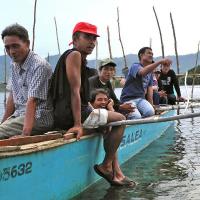Oceana Criticizes France’s Announcement on Bottom Trawling in Marine Protected Areas at UNOC3
Press Release Date: June 9, 2025
Location: Nice, France
Contact:
Anna Baxter | email: abaxter@oceana.org
Anna Baxter
On Monday, June 9, as the third United Nations Ocean Conference gets underway in Nice, France, President Emmanuel Macron announced that he will “limit” bottom trawling – an extremely destructive and wasteful fishing method that bulldozes the seafloor, destroying everything in its path – in some of the country’s marine protected areas. Specifically, France will protect 4% of French waters from this destructive activity, compared to just 0.1% today.
While Oceana welcomes France’s recognition of the need to tackle this issue, it criticizes the host country for taking these measures primarily in areas where bottom trawling does not occur and for failing to take the opportunity to lead and ban bottom trawling in all the country’s protected areas, including its iconic Marine Nature Parks (MNPs). In late May, Oceana released an analysis of fishing activity in France’s six MNPs in European waters in 2024, finding that more than 100 bottom trawling vessels spent over 17,000 hours fishing in these special and unique places, which have received “protected” status. That is the equivalent of one vessel fishing non-stop, 24/7 for nearly two years straight.
“These announcements bring more questions than answers,” said Oceana Campaign Director Nicolas Fournier. “President Macron built expectations that the French government would finally act against bottom trawling in marine protected areas – yet these announcements are more symbolic than impactful. Bottom trawling isn’t even occurring in most of the new areas proposed for protection, and the vast majority of protected areas in French European waters will remain only protected in name and do little to support the local communities and fishers that rely on them.”
“This is a missed opportunity to secure resilient and abundant oceans for fishers, for coastal communities, and for future generations,” said Alexandra Cousteau, ocean advocate and senior advisor to Oceana. “Allowing bottom trawling in marine protected areas makes a mockery of the very concept of protection. Marine protected areas alone won’t prevent ocean collapse, but they are one of our best safeguards against it. Failing to protect them puts us on a dangerous course toward a fading ocean and a future no one wants to inherit. As my grandfather once said, ’The sea, the great unifier, is man’s only hope. Now, as never before, the old phrase has a literal meaning: We are all in the same boat.’”
“Bottom trawling is one of the most destructive and wasteful practices taking place in our ocean today,” said Dr. Daniel Pauly, French Marine Scientist, Oceana Board Member, and Founder of the Sea Around Us Project. “These massive, weighted nets bulldoze the ocean floor, destroying everything in their path and remobilizing carbon stored in the seabed. You cannot destroy areas and call them protected. We don’t need more bulldozed tracks on the seafloor. We need protected areas that benefit people and nature.”
# # #
Oceana is the largest international advocacy organisation dedicated solely to ocean conservation. Oceana is rebuilding abundant and biodiverse oceans by winning science-based policies in countries that control one-quarter of the world’s wild fish catch. With more than 325 victories that stop overfishing, habitat destruction, oil and plastic pollution, and the killing of threatened species like turtles, whales, and sharks, Oceana’s campaigns are delivering results. A restored ocean means that 1 billion people can enjoy a healthy seafood meal every day, forever. Together, we can save the oceans and help feed the world. Visit europe.oceana.org to learn more.
*Global Fishing Watch, a provider of open data for use in this release, is an international nonprofit organisation dedicated to advancing ocean governance through increased transparency of human activity at sea. The views and opinions expressed in this article are those of the authors, which are not connected with or sponsored, endorsed, or granted official status by Global Fishing Watch. By creating and publicly sharing map visualisations, data and analysis tools, Global Fishing Watch aims to enable scientific research and transform the way our ocean is managed. Global Fishing Watch’s public data was used in the production of this publication.
**Any and all references to “fishing” should be understood in the context of Global Fishing Watch’s fishing detection algorithm, which is a best effort to determine “apparent fishing effort” based on vessel speed and direction data from the Automatic Identification System (AIS) collected via satellites and terrestrial receivers. As AIS data varies in completeness, accuracy and quality, and the fishing detection algorithm is a statistical estimate of apparent fishing activity, therefore it is possible that some fishing effort is not identified and conversely, that some fishing effort identified is not fishing. For these reasons, GFW qualifies all designations of vessel fishing effort, including synonyms of the term “fishing effort,” such as “fishing” or “fishing activity,” as “apparent,” rather than certain. Any/all GFW information about “apparent fishing effort” should be considered an estimate and must be relied upon solely at your own risk. GFW is taking steps to make sure fishing effort designations are as accurate as possible.



